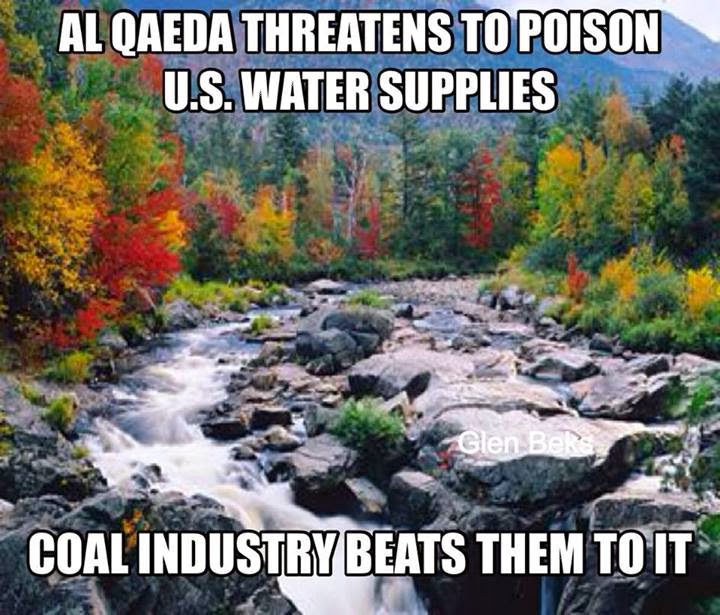 English: Downpatrick Head The northerly point of this section of coastline. A bronze age promontory fort on rocks laid down in the lower carboniferous period - 350 million years ago. (Photo credit: Wikipedia)
English: Downpatrick Head The northerly point of this section of coastline. A bronze age promontory fort on rocks laid down in the lower carboniferous period - 350 million years ago. (Photo credit: Wikipedia) The Structure of Scientific Revolutions (Photo credit: Wikipedia)
The Structure of Scientific Revolutions (Photo credit: Wikipedia)I was looking at the sidebar, which was becoming cumbersome ( again ) with climate contention and caterwauling. Even after adding the current roster of sidebar notes into Climatism ( rather than just into the Livejournal collection of Notable Articles ), loose material in the browser looked like grist for the mill .... a new post
Spot the Vested Interest: The $1.5 Trillion Climate Change Industry
Climate Change Business Journal estimates the Climate Change
Industry is a $1.5 Trillion dollar escapade, which means four billion
dollars a day is spent on our quest to change the climate. That includes
everything from carbon markets to carbon consulting, carbon
sequestration, renewables, biofuels, green buildings and insipid cars.
For comparison global retail sales online are worth around $1.5 trillion. So all the money wasted on the climate is equivalent to all the goods bought online.
The special thing about this industry is that it wouldn’t exist if it weren’t for an assumption about relative humidity that is probably wrong. As such, it’s the only major industry in the world dependent on consumer and voter ignorance. This is not just another vested interest in a political debate; it’s vested-on-steroids, a mere opinion poll away from extinction. You can almost hear the captains of climate industry bellowing: “Keep ‘em ignorant and believing, or the money goes away!”.
To state the obvious:
The special thing about this industry is that it wouldn’t exist if it weren’t for an assumption about relative humidity that is probably wrong. As such, it’s the only major industry in the world dependent on consumer and voter ignorance. This is not just another vested interest in a political debate; it’s vested-on-steroids, a mere opinion poll away from extinction. You can almost hear the captains of climate industry bellowing: “Keep ‘em ignorant and believing, or the money goes away!”.
To state the obvious:
Policy, or the anticipation of new policy, has been one of the biggest drivers of the industry
100+ Papers – Sun Drives Climate
US scientists significantly more likely to publish fake research, study finds
The FDA Underreports Scientific Misconduct In Peer-Reviewed Articles: The Benefits Of Negative Science
A new JAMA study found the Food and Drug Administration (FDA) is silent on matters of scientific misconduct and fraud.
Researchers reported in at least 57 clinical trials, the FDA found evidence of one or more of the following problems: falsification or submission of false information, problems with adverse events reporting, protocol violations, inadequate or inaccurate recordkeeping, failure to protect the safety of patients or issues with informed consent. Yet, only three of the 78 publications that resulted from these trials made note of this. There were largely no corrections, retractions, or listed concerns.
Researchers reported in at least 57 clinical trials, the FDA found evidence of one or more of the following problems: falsification or submission of false information, problems with adverse events reporting, protocol violations, inadequate or inaccurate recordkeeping, failure to protect the safety of patients or issues with informed consent. Yet, only three of the 78 publications that resulted from these trials made note of this. There were largely no corrections, retractions, or listed concerns.
The Need for a New Paradigm, Including for Rainfall Forecasting
The General Circulation Models (GCMs) that underpin the paradigm of AGW
have difficulty generating rainfall forecasts with any real level of
skill more than 4 days in advance. If a fraction of the billions spent
developing these simulation models, had instead been invested in a
theory of climate underpinned with state-of-the-art statistical models
based on an understanding of natural climate cycles, I believe we would
be much closer to being able to mitigate climate variability across the
globe through better rainfall forecasts with very significant benefits
for all of mankind, but particularly subsistence farmers in places like
India. In short, what we really need is a new paradigm for climate
science, underpinned by new tools with some utility.
What consensus? Less than half of climate scientists agree with the IPCC “95%” certainty
Fabius Maximus asks whether there is a common skeptic view-point, or a dominant paradigm, and talks about Thomas Kuhn’s The Structure of Scientific Revolutions .
.
Climate and the Carboniferous Period
Average global temperatures in the Early Carboniferous Period were hot- approximately 20° C (68° F). However, cooling during the Middle Carboniferous reduced average global temperatures to about 12° C (54° F). As shown on the chart below, this is comparable to the average global temperature on Earth today!
Similarly, atmospheric concentrations of carbon dioxide (CO2) in the Early Carboniferous Period were approximately 1500 ppm (parts per million), but by the Middle Carboniferous had declined to about 350 ppm -- comparable to average CO2 concentrations today!
 Earth's atmosphere today contains about 380
ppm CO2 (0.038%). Compared to former geologic times, our present
atmosphere, like the Late Carboniferous atmosphere, is
CO2- impoverished! In the last 600 million years of Earth's history
only the Carboniferous Period and our present age, the Quaternary
Period, have witnessed CO2 levels less than 400 ppm.
Earth's atmosphere today contains about 380
ppm CO2 (0.038%). Compared to former geologic times, our present
atmosphere, like the Late Carboniferous atmosphere, is
CO2- impoverished! In the last 600 million years of Earth's history
only the Carboniferous Period and our present age, the Quaternary
Period, have witnessed CO2 levels less than 400 ppm.
Two special conditions of terrestrial landmass distribution, when they exist concurrently, appear as a sort of common denominator for the occurrence of very long-term simultaneous declines in both global temperature and atmospheric carbon dioxide (CO2):
These special conditions existed during the Carboniferous Period, as they do today in our present Quaternary Period.
Evidence for decoupling of
atmospheric CO
and global climate
during the Phanerozoic eon
Kuhn’s work shows that a paradigm cannot be disproved, only replaced (details here).
Unless the skeptics form a theory, they’ll remain minor players in the
debates — the climate science debate and the public policy debate about
climate change (they’re distinct, although often conflated).
To that end, I would say that no one has ever done a decent survey of
skeptical scientists, so we don’t know. Though the fact that so many
psychologists say they want to understand skeptics and so few of them
survey the scientists or leaders involved in this is rather significant,
methinks.Climate and the Carboniferous Period
Average global temperatures in the Early Carboniferous Period were hot- approximately 20° C (68° F). However, cooling during the Middle Carboniferous reduced average global temperatures to about 12° C (54° F). As shown on the chart below, this is comparable to the average global temperature on Earth today!
Similarly, atmospheric concentrations of carbon dioxide (CO2) in the Early Carboniferous Period were approximately 1500 ppm (parts per million), but by the Middle Carboniferous had declined to about 350 ppm -- comparable to average CO2 concentrations today!
Two special conditions of terrestrial landmass distribution, when they exist concurrently, appear as a sort of common denominator for the occurrence of very long-term simultaneous declines in both global temperature and atmospheric carbon dioxide (CO2):
1) the existence of a continuous continental landmass stretching from pole to pole, restricting free circulation of polar and tropical waters, and
2) the existence of a large (south) polar landmass capable of supporting thick glacial ice accumulations.
These special conditions existed during the Carboniferous Period, as they do today in our present Quaternary Period.
Evidence for decoupling of
atmospheric CO
and global climate
during the Phanerozoic eon
Global Warming Unveiled
Sunday, December 15, 2013
Calculated Mean
Global Temperatures 1610-2012
This monograph considers only average global temperature. It does not
discuss weather, which is a complex study of energy moving about the planet. It
does not even address local climate, which includes precipitation. It does,
however, consider the issue of Global Warming and the mistaken perception that
human activity has a significant influence on it.





















No comments:
Post a Comment